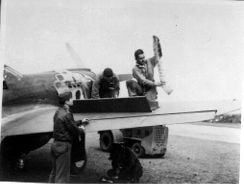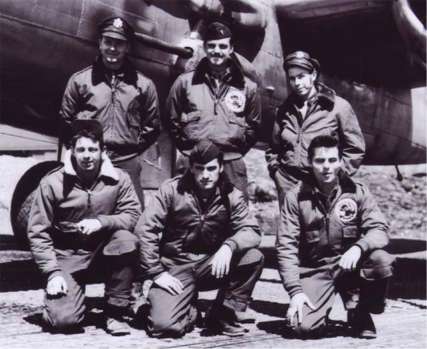The Arctic Storm "11th Air Force" | home
Do you have the right stuff | Training | Trash Attack
Do you have the right stuff
Do You Have The Right Stuff ?
If you can fly come join us, Lot of fun!!!!!!!!!!!!!!!!!! Did you know that "wavering" is an enemy of faith? "But let him ask in faith nothing wavering. For he that wavereth is like a wave of the sea driven with the wind and tossed.For let not that man (the one who wavers) think that he shall receive any thing of the Lord" (James 1:6,7). A wavering faith will not work! Once you take your stand, don't waver. The greatest battles ever fought was not fought in the air or on the sea or on the battlefields of the world. They have been fought in the human spirit. Wavering faith is an enemy that will defeat you in the battles of life. Refuse to waver...find the Word of God for your situation or circumstance and stand firm on it...no matter what!
11th
Fighter Squadron
Courtesy - USAF History Office
P-40E
11th Fighter Squadron
Loading Ammunition at Umnak in 1942
Lt James Perryman supervises
"A BAD DAY" Shot at by The Soviets and Japs At the Same Time!!
|
John Tidball - Pilot 77th Bomb Squadron June 9th 1945

The Flight Crew Standing: left to right Bill Bogar - Co-Pilot, John Tidball - Pilot, Bob Robbins - Navigator/Bombardier Kneeling: left to right Paul Werner - Radio/Waist Gunner, Fred Toti - Turret Gunner/Engineer, Bill O'Brien - Tail Gunner

During the spring and summer of '45, our squadron of B-25's and the squadron of B-24's, based on the neighboring island of Shemya were busy flying missions across the North Pacific to the Northern Kurile Islands.
Our purpose was to harass the Japs as much as we could, strafing and bombing their fisheries and canneries, plus any of their shipping which we could locate. The strategy was to keep them guessing about our intentions, and thus to divert some of their strength to the northern sector, while our big push was taking place in the south.
Our presidential unit citation after the war stated that our efforts had played a significant part in the diversion of some ten percent of the Japanese air power to the north. We lost about half our squadron during the spring and summer of '45 - some shot down, some having to land in Russia as the result of battle damage, and one crew having crash landed on Shimishu and been taken prisoner by the Japs.
On June 9th, eight of our crews were briefed to fly to Araido to bomb a fishery and cannery on that small island which lies off to the west of Paramushiru in the Sea of Okhotsk. This was to be an important diversionary strike, to coincide with the shelling of some of the more southern Kuriles by one of our naval task forces. The weather that day, not surprisingly, was pretty bad, and the first flight of B-25's got separated in the weather on the way over there, and could not reform. They returned to base separately.
Our flight managed to stay together, on the deck, made landfall on Cape Lopatka, the southern tip of the Kamchatka peninsula, and proceeded on over to Araido. We made our strafing runs, dropped our fire bombs, and got out of there, heading back east. We all knew, of course, that the Japs would be waiting for us as we attempted to return by their northern island of Shimishu.
About seven minutes away from the target, we spotted six Jap fighters off in the distance, hovering around like a swarm of bees. We had no option but to get into a tight left echelon, stay right on the deck, and try to get through the strait fast. The fighters attacked and the pressure apparently caused our flight leader to cross over the Soviet territory of Cape Lopatka.
Since the Soviets were technically still neutral in our war with Japan, their gunners opened fire on us, knocking down our flight leader. All the while, we were being attacked by the Jap fighters from above, and they knocked an engine out of one of our '25s, causing the pilot of that ship to head north for an emergency landing at Petropavlosk. That left just one of the other B-25's and I to make it back to Attu. Both our crews were credited with one fighter each as "probably destroyed". They could not be seen hitting the water due to low lying fog.
The other plane that was able to return to base with me on that particular day was piloted by my good friend, Bob Talley. Bob and I went through advanced training together, and have stayed in touch with one another through all the intervening years. He, too, saw some pretty fierce action, and on one occasion had an aileron almost completely shot off. A good man and a mighty fine pilot.
Although we were later in a Cold War with the Soviets which lasted almost fifty years, on that particular day, our four crews became part of only a handful of Americans to be actually shot at by Soviet gunners. And, I might add that being shot at simultaneously by Soviets and Japs is not a good way to spend and afternoon.
John Tidball
B-25 pilot - 77th Bomb Squadron.